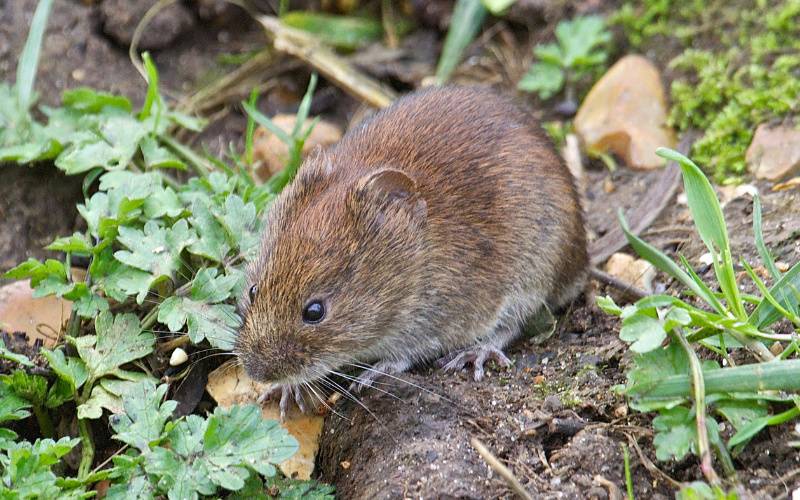Comprehensive Guide to Effective Vole Parasite Control: Infestation Identification and Therapy Methods
In the realm of efficient insect control, vole invasions posture an one-of-a-kind difficulty that demands a critical method. These tiny rodents, frequently incorrect for computer mice, can wreak mayhem on gardens, grass, and crops if left untreated. Recognizing the indicators of vole presence and applying targeted treatment approaches are important parts of a successful parasite management strategy. By discovering the nuances of vole habits, understanding essential indications of infestation, and examining a range of control choices, one can create a comprehensive method to combat these elusive bugs.
Recognizing Vole Actions
Vole habits is defined by their burrowing habits and rapid recreation prices, making them a difficult insect to control effectively. Their rapid reproductive rate further complicates control efforts, with ladies capable of producing several trashes in a solitary year, each containing a number of spawn.
Voles are most active during the morning and evening hours, spending most of their time foraging for food. Their delving routines not only disrupt lawns and yards yet also make them challenging to spot and get rid of. Understanding vole actions is vital for effective parasite control approaches. By determining their burrow locations, keeping an eye on feeding areas, and implementing targeted control techniques, such as capturing or habitat modification, vole infestations can be managed successfully.
Indications of Vole Problem

Prevention Approaches
Executing efficient avoidance strategies is vital in minimizing vole problems and safeguarding plants from their destructive feeding routines (vole control). To avoid vole infestations, it is vital to start by eliminating prospective food sources and sanctuary. Maintain yard and vegetation trimmed short, eliminate weeds and particles, and keep a tidy garden or lawn to make the area less attractive to voles. Setting up barriers such as hardware fabric or below ground secure fencing can additionally aid deter voles from going into certain locations. In addition, decreasing excess wetness by fixing leaking pipes and making sure appropriate water drainage can make the setting much less friendly for voles.
On a regular basis checking the building for indications of vole activity, such as paths and delve openings, is important for early discovery and timely action. Take into consideration making use of traps or repellents tactically placed near their paths if vole activity is believed. Utilizing natural killers like owls or serpents can additionally try this web-site assist keep vole populaces in check. By carrying out a combination of these avoidance techniques, gardeners and home owners can properly safeguard their vegetation from vole damages.
Non-Lethal Control Techniques
To properly take care of vole populations while prioritizing humane approaches, non-lethal control approaches use functional services for decreasing vole damage in landscapes and yards. These barriers can be hidden at the very least 12 inches deep and curved at a 90-degree angle to stop voles from tunneling underneath.

Lethal Control Options
One efficient technique for dealing with vole invasions in gardens and landscapes entails the strategic use of dangerous control alternatives. When faced with a severe vole invasion that non-lethal techniques have stopped working to consist of, applying lethal control steps comes to be important. In general, when employing dangerous control choices, it is important to do so sensibly and in conformity with local laws to successfully take care of vole invasions.
Conclusion
To conclude, reliable vole pest control calls for a detailed understanding of vole behavior, recognition of signs of invasion, this link implementation of avoidance strategies, and application of both dangerous and non-lethal control techniques. By incorporating these methods, people can successfully manage vole populaces and safeguard their residential property from damages. It is important to attend to vole invasions promptly to stop further problems and minimize the influence on the surrounding atmosphere.
Given the complex tunnel systems and quick reproduction prices characteristic of voles, acknowledging the signs of vole invasion comes to be necessary in effective bug control. One of the key indicators of vole visibility is the presence of surface area paths or routes in grass or snow, normally about 1-2 inches large, created as voles travel between their burrows and food sources.To successfully take care of vole populations while prioritizing gentle techniques, non-lethal control approaches provide functional remedies for decreasing vole damages in landscapes and yards.One effective method for attending to vole infestations in gardens and landscapes go to website involves the calculated use of lethal control options. vole control utah.In conclusion, effective vole parasite control calls for a thorough understanding of vole actions, identification of signs of infestation, application of avoidance methods, and usage of both non-lethal and deadly control approaches